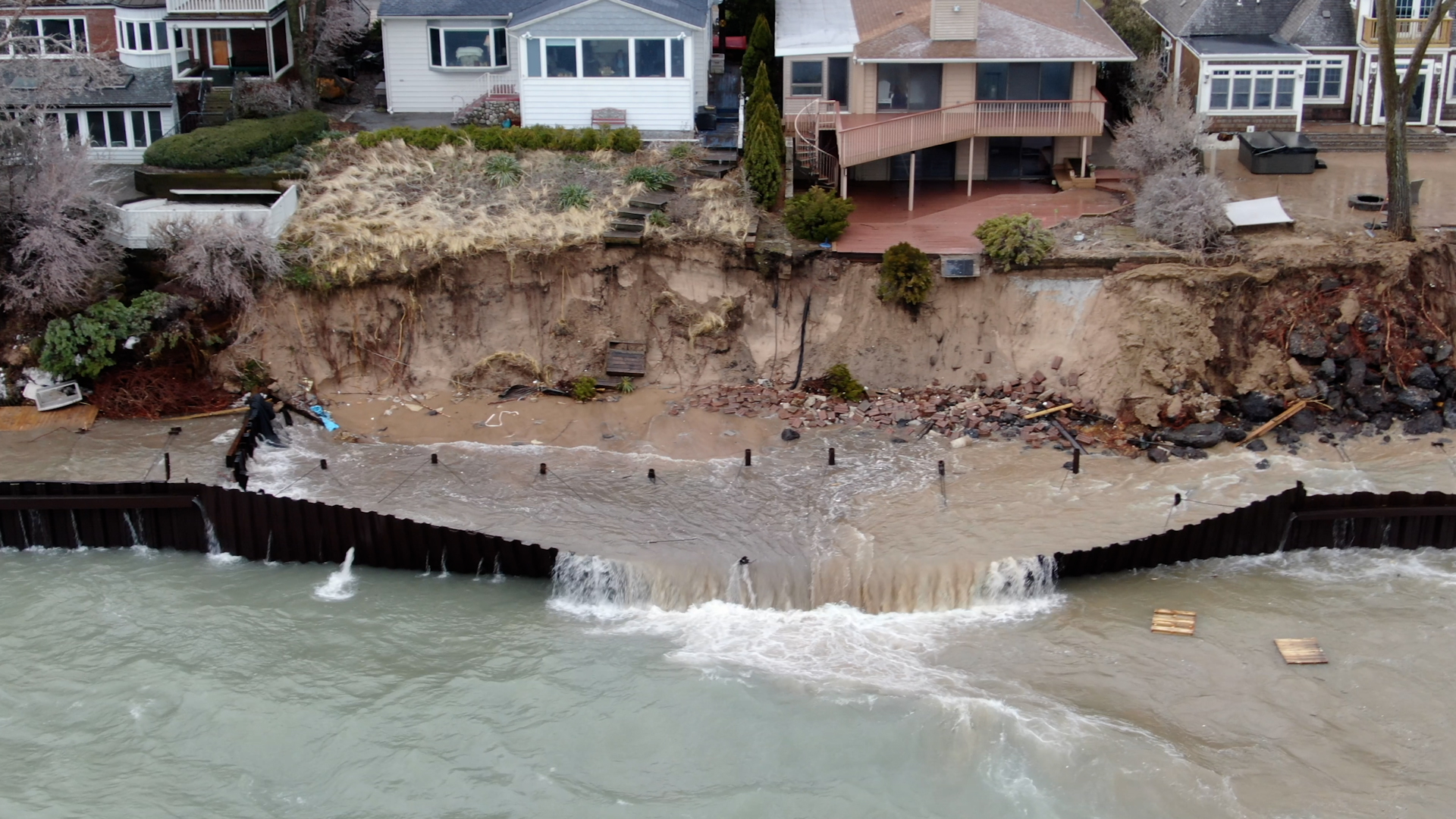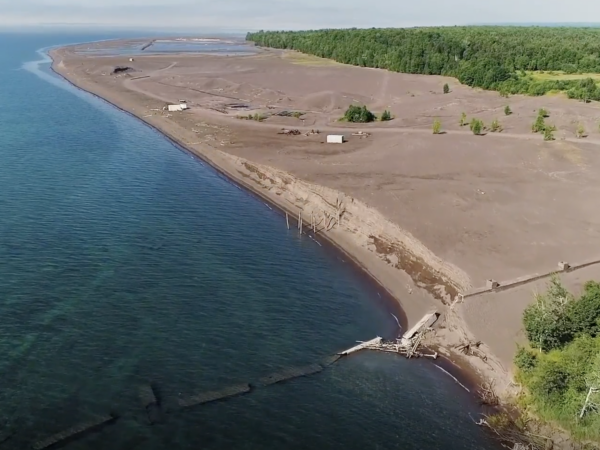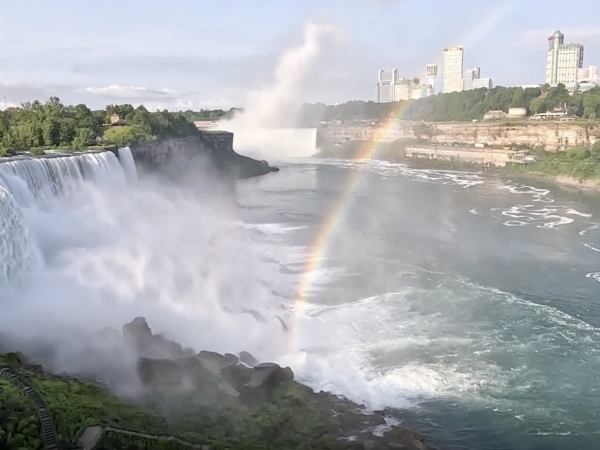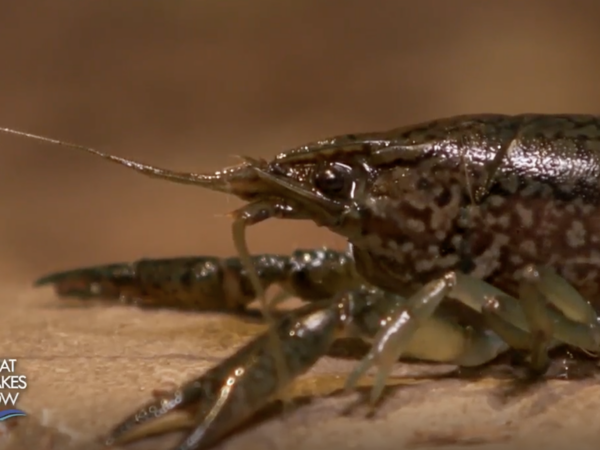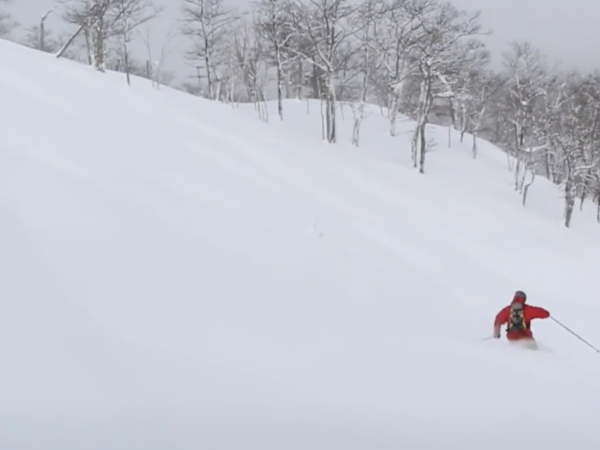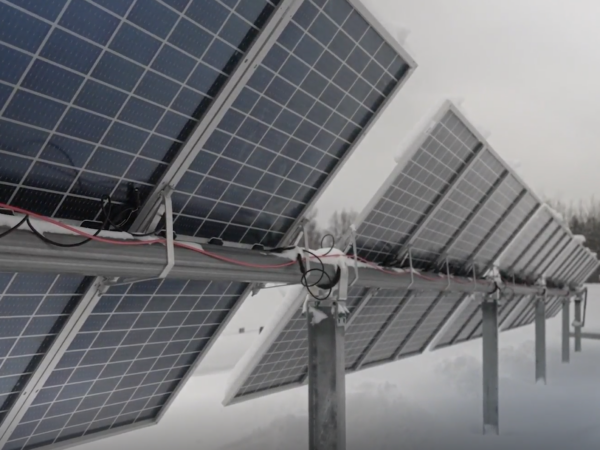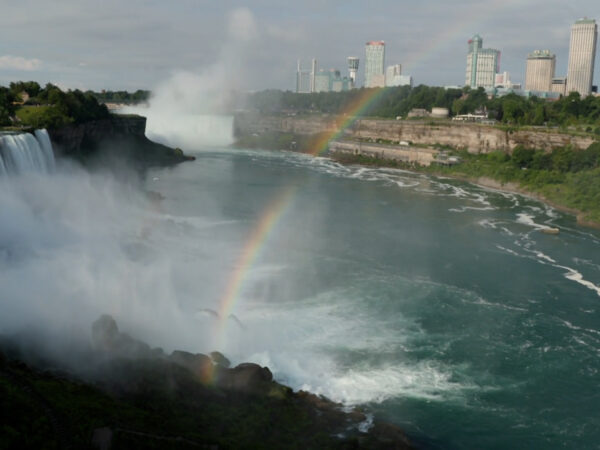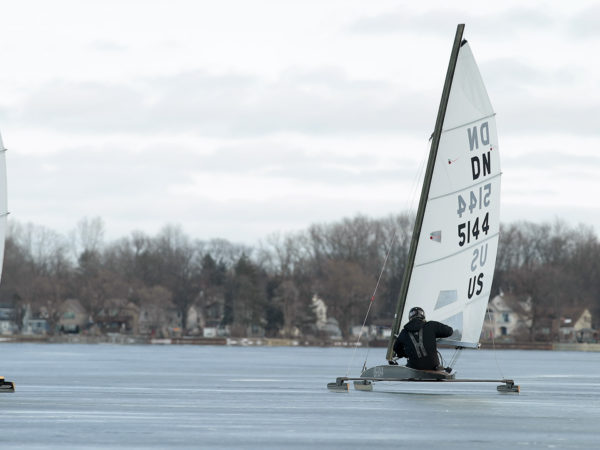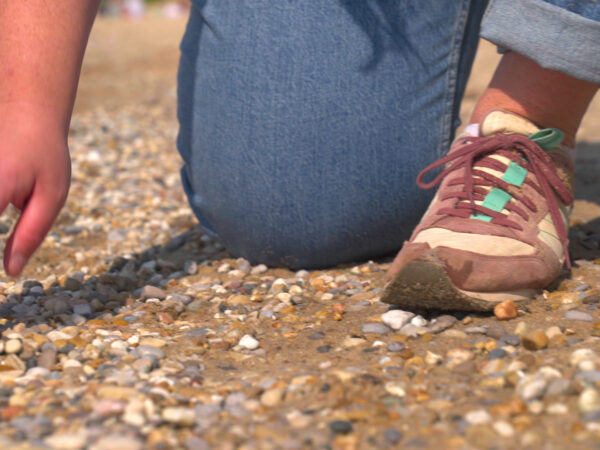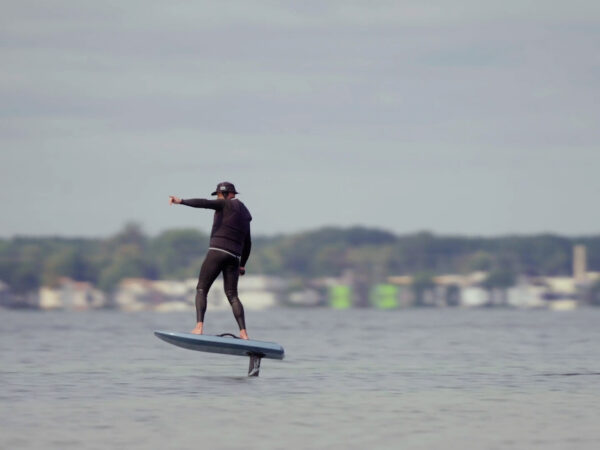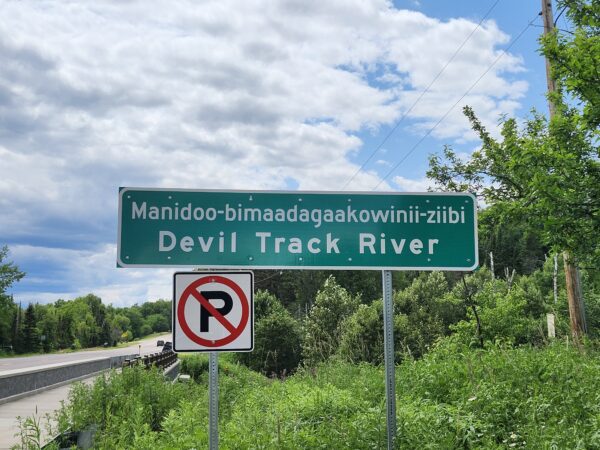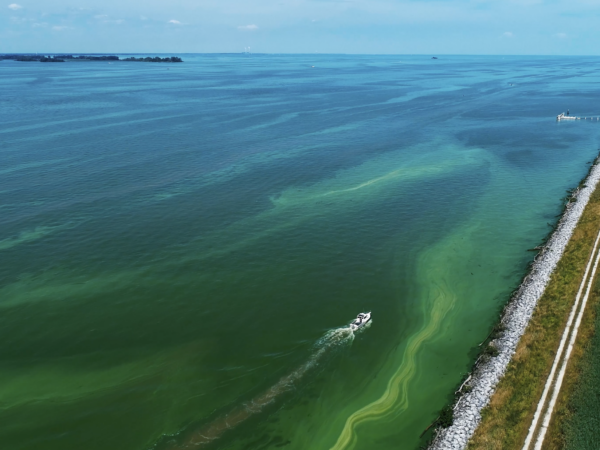IN THIS EPISODE:
In this episode of Great Lakes Now, Indiana shoreline residents take drastic action to save their homes from powerful waves, Michigan DNR officials defend against climate change by removing old dams, and The Catch offers news from around the region.
GREAT LAKES LEARNING:
Explore this month’s hands-on lesson plans designed to help your middle schoolers understand the Great Lakes — all at home or in the classroom. They’re aligned to education standards AND free to download.
Lesson Plans
Have a question about the Great Lakes or life in the region?
Ask Great Lakes Now, and if we can answer it, we might loop it into our coverage so others can learn too.
Submit Your Question
When to Watch?
Check your local station for when Great Lakes Now is on in your area.
Premieres on DPTV
Monday, November 27, at 7:30 PM
STATIONS CARRYING THE SERIES
DPTV
Detroit, Michigan
WEAO
Akron, Ohio
WNEO-TV
Alliance, Ohio
WCML-TV
Alpena, Michigan
WDCP-TV
Bad Axe, Michigan
BCTV
Bay County, Michigan
WBGU-TV
Bowling Green, Ohio
WNED-TV
Buffalo, New York
WCMV-TV
Cadillac, Michigan
WTTW-TV
Chicago, Illinois
WVIZ-TV
Cleveland, Ohio
WKAR-TV
East Lansing, Michigan
WQLN-TV
Erie, Pennsylvania
WCMZ-TV
Flint, Michigan
WGVU-TV
Grand Rapids, Michigan
WPNE-TV
Green Bay, Wisconsin
WGVK-TV
Kalamazoo, Michigan
WHLA-TV
La Crosse, Wisconsin
WHA-TV
Madison, Wisconsin
WNMU-TV
Marquette, Michigan
WHWC-TV
Menomonie-Eau Claire, Wisconsin
WMVS-TV
Milwaukee, Wisconsin
WCMU-TV
Mt. Pleasant, Michigan
WLEF-TV
Park Falls, Wisconsin
WNIT-TV
South Bend, Indiana
WCNY-TV
Syracuse, New York
WGTE-TV
Toledo, Ohio
WDCQ-TV
University Center, Michigan
WNPI-TV
Watertown, New York for Ontario signal
WPBS-TV
Watertown, New York for U.S. signal
WHRM-TV
Wausau, Wisconsin
Dam Removal
SEGMENT 1 | Allegan, Michigan; Midland, Michigan; Otsego, Michigan
In Michigan, the Department of Natural Resources is removing old and obsolete dams to combat climate change. This effort aims to reduce the temperature of cold-water streams, which are warming because of climate change and creating inhospitable habitats for some Great Lakes fish species.
Removing old dams eliminates impoundments – the artificial lakes that form behind dams as river water backs up. This is important because the sun can heat water in an impoundment more than it heats a flowing river – and that’s bad news for trout and salmon which simply can’t survive in warmer water.
The Michigan DNR hopes that dam removal not only combats climate change, but also restore fisheries. By removing these physical barriers, fish can move upstream to habitats previously unreachable to them. We’ll visit the site of the old Otsego Township Dam, which was removed in 2016, to witness the impact of its restoration.
Ogden Dunes Erosion
SEGMENT 2 | Ogden Dunes, Indiana
Halloween night is often flooded with little ghouls and goblins in search of candy. But, for Steve Coombs, Halloween 2019 was no treat. He was going through a real nightmare. “Laying in bed, just feeling the house shake with every single wave, it was really distressing!”
Coombs and his wife are long-time residents of Ogden Dunes, Indiana. It’s a tiny town sandwiched between a national park and heavy industry at the southernmost end of Lake Michigan.
On the last day of October 2019, heavy waves started crashing into the shore. “And they were hitting the wall so hard that our entire house would shake,” said Coombs. “And that undermined the steel wall and eventually the steel wall actually failed.”
That steel wall was the last line of defense between the ferocious waves and Coombs’ house. He and his neighbors, like Sandy Boyer, knew they would have to take action to save their homes from destruction. “It took it to the point where we were losing the structures that had been built to protect the town and the homes behind the town,” said Boyer.
Desperate to hang on to their homes and way of life on the beach, residents in Ogden Dunes raised more than $5-million dollars to build a revetment made of huge boulders. The giant rocks were stacked about 15-feet high on the beach. Usually built on the slope of a shoreline, a revetment is designed to soften the blow of heavy waves. Completed in 2020, the revetment in Ogden Dunes seems to be working. “It’s made a huge difference,” said Coombs. “The house no longer shakes. It doesn’t matter how big the waves are that revetment diffuses the force of the waves.”
Residents point the finger of blame at the huge Port of Indiana-Burns Harbor for their erosion problems. The breakwater protecting the port just east of Ogden Dunes juts out into Lake Michigan about a half mile. That breakwater is interrupting the natural flow of sand along the shoreline. It’s called the Littoral Drift.
Rodger Howell has lived in Ogden Dunes for more than eight years. “When I moved in there was a tremendous beach,” says Howell. “They had dunes and about 300-yards or so of beach…the port to the east of Ogden Dunes basically blocks all the natural sand flow. So the town is essentially starved of sand.”
That sand starvation means the beach keeps shrinking, leaving it more vulnerable to powerful storms off Lake Michigan. Dr. Cary Troy, who heads the Purdue University Great Lakes Coastal Process Lab says man-made breakwaters are causing this type of problem throughout the Great Lakes. “If you look on Google Earth you can see a lot of situations where you will see accumulation of sand on one side and erosion on the other.”
While a revetment may provide immediate relief, environmentalists in Northwest Indiana oppose the construction of revetments to control erosion. Betsy Maher is Executive Director of “Save the Dunes”, an environmental group that is challenging the town of Ogden Dunes in court. “…and we are sympathetic to the town,” said Maher. “But, there are alternatives out there that are more nature based.”
The most common alternative for controlling shoreline erosion is something called “Beach Nourishment.” For example, beaches in Miami are regularly nourished with large volumes of sand. It can be trucked in or in some cases piped in using a process called Sand Bypassing. “Which is where you have this blockage of sand in the longshore direction,” said Dr. Troy. “and you continuously pump sand from one side of the structure to the other in the exact way that nature would want that sand to be flowing along that Littoral conveyor belt.”
But, beach nourishment is expensive, and small towns like Ogden Dunes can’t afford to do it. So the residents have been asking the State of Indiana and Federal government for help. The Army Corps of Engineers is waiting on Federal money to launch a feasibility study on how to solve the ongoing erosion problem in Ogden Dunes. But, that study could take a decade to complete.
Making matters worse is climate change. Warmer temperatures can strengthen storms like the one that hit Ogden Dunes in 2019. Plus, in the winter, ice cover called “shelf ice” normally protects the shore from heavy waves. “So with ice cover going away, which is a known effect of climate change, we have more opportunities for these big storms to build really big waves,” said Dr. Troy.
In addition, the once reliable cycle of water levels across the Great Lakes is changing. The frequency between highs and lows has been accelerating. “All of a sudden these beaches are way out of equilibrium with the new water levels,” said Dr. Troy. “…and that sand will just rapidly be transported away as the beach tries to come to a new equilibrium.”
Meanwhile, residents living on the shore say they’re caught in the middle between nature, industry and the government as they fight to save their beach. “We’re all for everyone using the beach,” said Coombs. “And you know, we look forward to the day where we get more sand and more people can come and share our beach and enjoy the beach just like we do everyday.”
The Catch: News about the Lakes You Love
SEGMENT 3 | Great lakes watershed
This segment – The Catch – in our award-winning PBS program will keep you in the know. This month, learn about the role Ontario greenhouses could be playing in increasing algal blooms in Lake Erie, the largest project ever funded under a Great Lakes cleanup program aimed at removing contaminated sediments from a polluted hotspot in Milwaukee, and an excerpt from our new environmental justice series, “Waves of Change,” featuring community organizer Alicia Smith.
First, a look at why experts are saying water from greenhouses in southern Ontario could be harming Lake Erie. Journalist and farmer Matt McIntosh recently reported on the issue for The Narwhal. “The greenhouse sector which comprises both vegetables and and more recently cannabis, because it’s expanded so much in recent years, what it’s done is it’s caused a notable jump and sustained jump in nutrient loading levels in local waterways,” Matt said. These nutrients — especially phosphoru — can fuel harmful algae blooms that threaten the ecosystem, and sometimes the drinking water.
Next up, a look at the largest project ever funded under a Great Lakes cleanup program. The aim is to remove contaminated sediments from a polluted hotspot in Milwaukee. Wisconsin Public Radio’s Danielle Kaeding has the story. “Federal environmental regulators announced roughly $450 million for this cleanup effort, and that would remove around 2 million cubic yards of contaminated sediments, which the EPA says is about the equivalent of 610 Olympic sized swimming pools,” Danielle said. The sediments will be dredged from the Milwaukee Harbor and three rivers in the surrounding area, according to the EPA. Funding comes from federal, state, county, and municipal sources, and Danielle says that’s a significant step toward cleaning up the Milwaukee Estuary Area of Concern, which includes part of the Milwaukee, Menomonee, and Kinnickinnic rivers.
Finally, an excerpt from our new digital series, “Waves of Change,” where we spotlight the diverse faces and perspectives shaping the environmental justice movement throughout the Great Lakes. This time, we talk with Alicia Smith, Executive Director of the Junction Coalition, a community nonprofit, based in Toledo, Ohio. “Environmental justice is making sure people are aware of the harms within their community, social justice is making sure that they know how to advocate for themselves… economic justice is making sure that the people are more important than the profit…and peace is when you’re not living the trauma day to day,” Alicia said.
Featured Articles
Digital Credits
The Great Lakes Now Series is produced by Rob Green and Anna Sysling.



